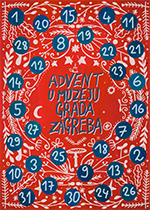By 1989, changes were being felt in Zagreb, and the first opposition parties were being set up. The rock concert by the group Prljavo kazalište on the Square of the Republic, as it then was, was highly significant.
The fall of the Berlin Wall led to the collapse of communism in all the states of central and eastern Europe. The League of Communists of Yugoslavia was also to disintegrate (1990).
On May 30 1990 the first multy-party Parliament was convened in Zagreb, and June 25 1991 saw the proclamation of the sovereign and independent Republic of Croatia. The firs president of the new Croatian state was Dr. Franjo Tuđman. With great enthusiasm, Zagreb set out on the transformation of society and the realisation of a major project called Zagreb – the Croatian metropolis, the first symbolic step towards which was the re-erection of the Ban Jelačić Monument on the place it had been removed from in 1947.
In summer 1991 Croatia was forced into a war with an adversary led by Greater Serbian extremists abetted by the Yugoslav Army (JNA). The war for Croatian independence was the war of the entire Croatian people. Frequent air-raid warnings forced the citizens into improvised refuges and shelters. But the ability of the JNA to strike was paralysed by a blockade of the barracks in Zagreb.
On October 7, 1991, at 15.10 hrs, JNA planes rocketed the Upper City, aiming at the Ban’s Palace, the political centre of Croatia. Numerous Zagreb people went off to the battlefield or took part in military operations by giving logistic support. The City of Zagreb, with the assistance of the international charities, especially Caritas, looked after more than 130,000 refugees and displaced persons. The life of the great city went on in spite of the wartime conditions. Sandbags piled up in the streets and in front of cultural monuments. Areas of glass were covered with sticky tape, which gave the town a new visual identity. Zagreb artists reacted vigorously to the new reality of war. In Zagreb, war exhibitions were put on, and artists organised themselves into a special squad and went off to the front to raise the morale of the soldiers. In August 1995, Zagreb celebrated the return of military units from the victorious OLUJA (Storm) campaign. The plan for the refurbishing of Zagreb’s streets and squares, for the building of new churches and commercial centres, is just part of the overall project of the metropolis in the future.
Celebrations surrounding the 9th centenary of the See of Zagreb and the first written mention of the city were crowned by the visit of the Holy Father – Pope John Paul II – to Zagreb.
Nada Premerl

